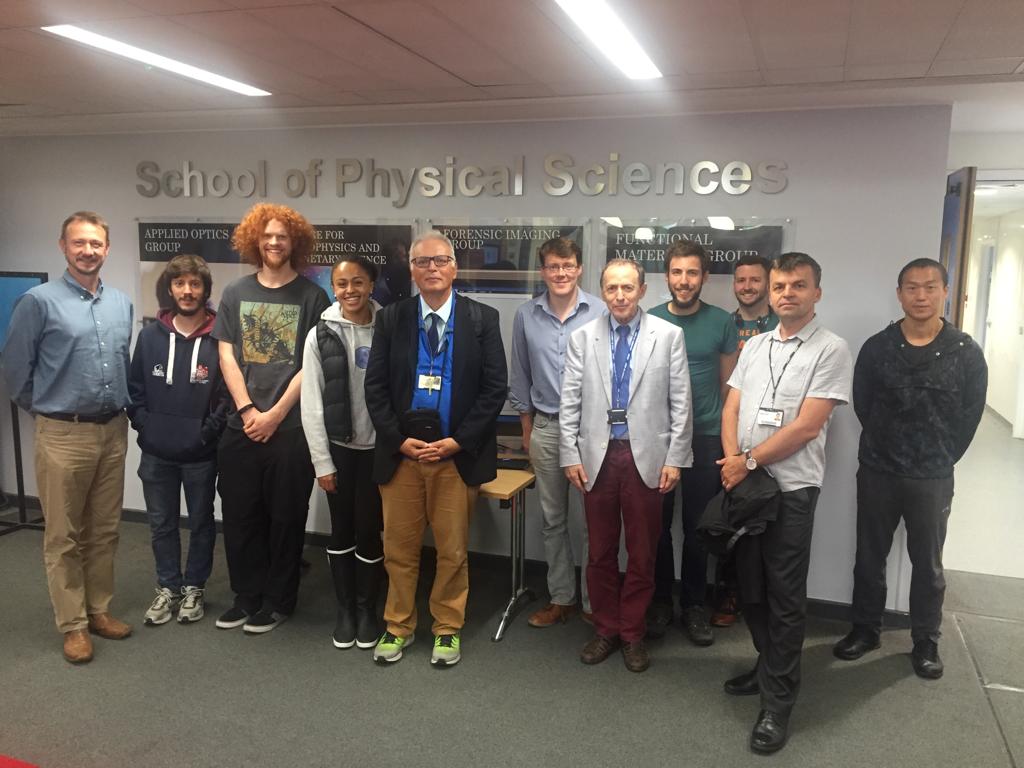
Diandra Beckles, a physics undergraduate student at Kent, completed a six week internship with Dr Mike Hughes in the Applied Optics Group this summer, with a bursary funded by the School of Physical Sciences. Below, she writes about her experiences.
Throughout the summer I was looking for a way to stay involved in the learning I had developed over the course of the year, so when the opportunity to work with the Applied Optics Group opened up, I jumped at the chance. Over the course of the 6-week program, I was able to participate in many different events and experience what a research-based career could entail. My aim was to build upon my existing coding knowledge, contribute to outreach and learn more about the university’s research programmes.
The first week began with laser safety training, witnessing expert laboratory experiments and programming of a miniature computer. I entered into the internship with a basic knowledge of Python but with each addition to the Raspberry Pi computer I had to find a new way of implementing the language I had learnt in lectures that year. I was able to learn how to translate between languages – such as Matlab to Python – and learn how the future of research is being changed as packages are updated, becoming more customisable.
Once my laser training was complete, I was allowed access to the AOG. labs and even invited to watch a new experiment my supervisor was testing out. The experiment involved high-precision equipment and I saw how important being able to replicate procedures was to final success.
I was given my own experiment to build upon: low-cost holographic microscopy. This involved using the Raspberry Pi alongside a lens-less camera to capture holograms which would then be reconstructed in Python. In order to quantify the sharpness, optimal depth and image data, I learnt about packages that I had not previously been introduced to. One such package was OpenCV that I used to test for blurriness but also learnt that it is used as a face recognition software in many modern devices. In order to reconstruction the holograms, I also had to understand the wave profile that would reach the camera and so furthered my mathematics knowledge to include vital principles such as the Fourier Transformation and Laplacian techniques.
Mid-way through my program, I assisted in outreach programs that the AOG and the university are involved in. These included Space School and Science Week where I helped create activities and was even allowed to design and construct my own rocket. With a fellow AOG colleague, I got a taste of electrical engineering as we created a portable fluorescence microscope powered by USB. The outreach programs were an enjoyable break from coding but also taught me how many different research programs the University is involved in which even include an ESA space lab on the future NASA gateway.
During my final week, I wanted to ensure I had taken part in every opportunity open to me. As such, I designed and 3D printed a housing compartment for the equipment used in my holography experiment. Using computer aided design was completely new to me and I saw how complex building a simple 6-by-6 cm cube could become.
Overall, I feel incredibly privileged and humbled to have been able to spend my summer alongside the AOG. team. From seminars with guest speakers, movie night and farewell gifts, not only did I achieve my original goals but I truly felt part of the team.